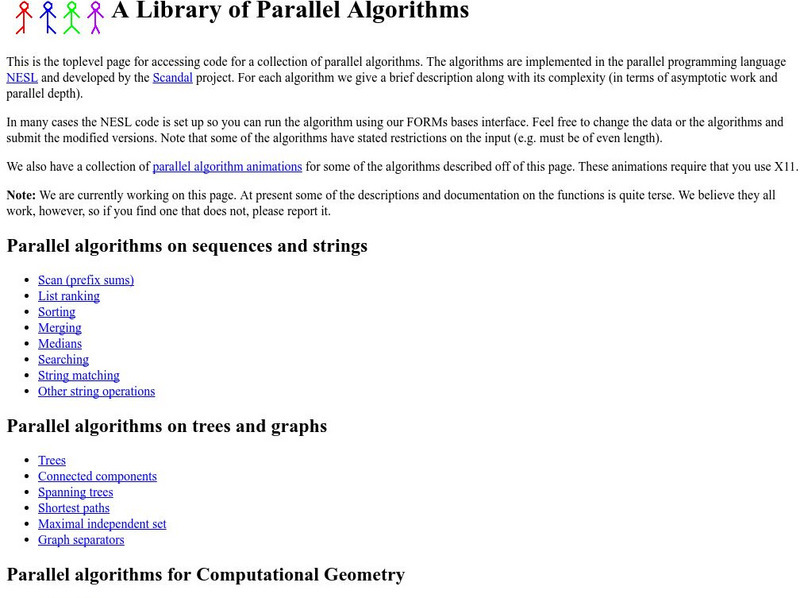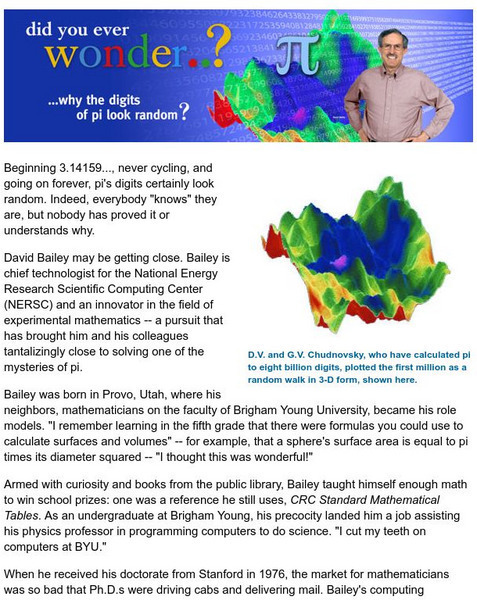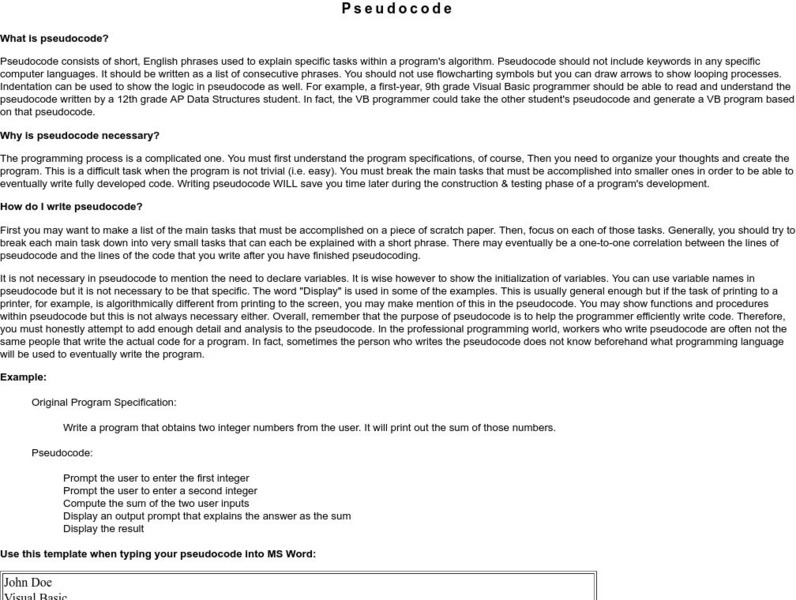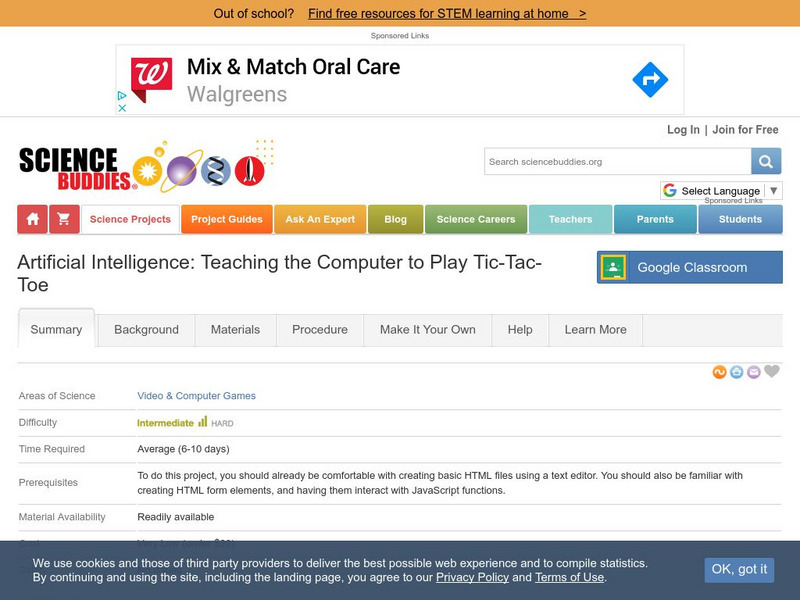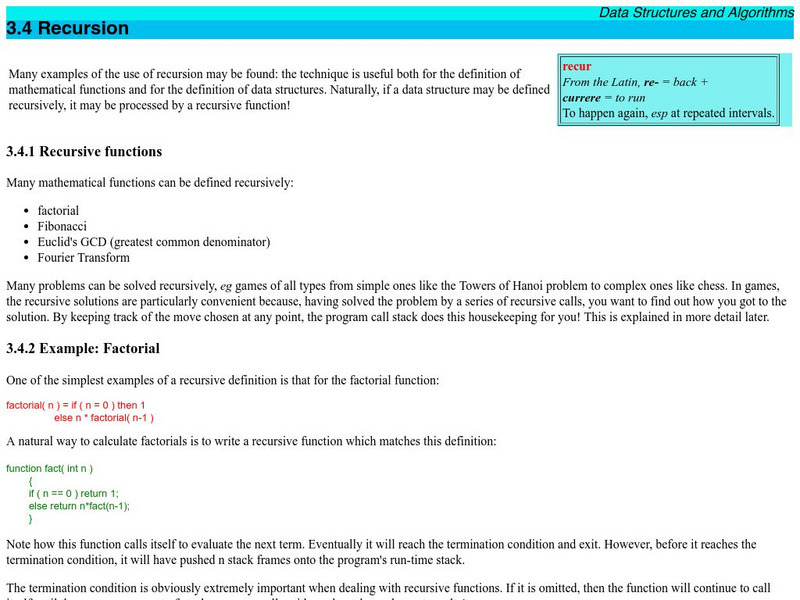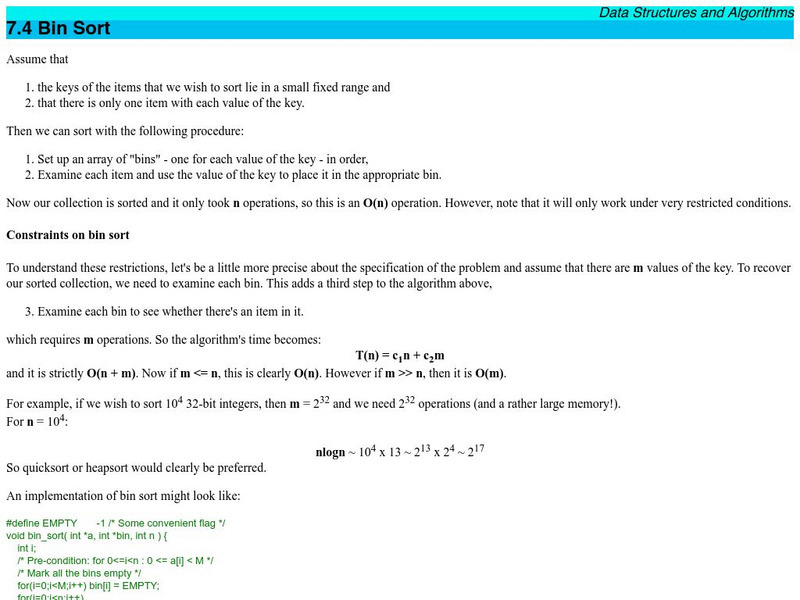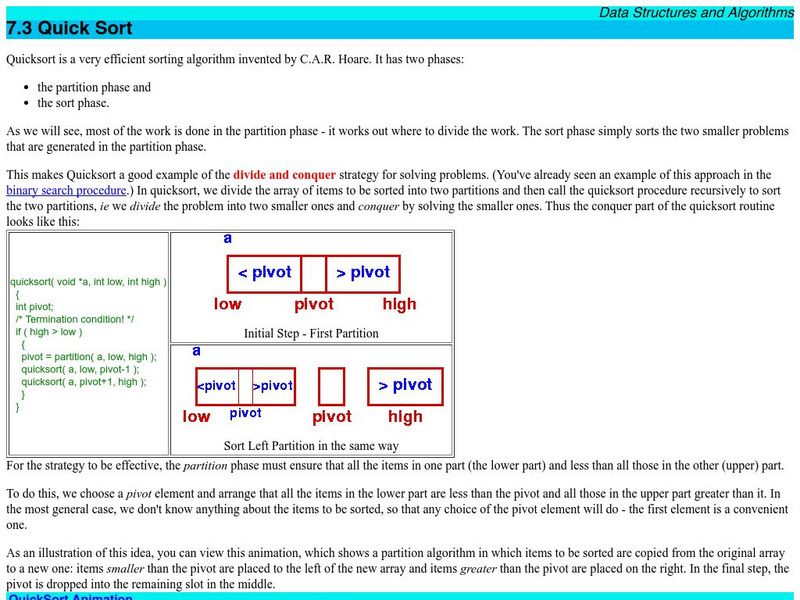Other
Algorithms: Big Oh Notation
An in-depth look at the algorithm measurement tool known as Big-O.
Carnegie Mellon University
Carnegie Mellon: A Library of Parallel Algorithms
A page for accessing code for a collection of parallel algorithms.The algorithms are implemented in the parallel programming language NESL and developed by the Scandal project. There is a brief description along with its complexity (in...
Shodor Education Foundation
Shodor Interactivate: Lesson: Algorithm Discovery With Venn Diagrams
The lesson plan, with objectives, lesson outline, and interactive resources, helps students learn about algorithms using box plots and Venn diagrams.
Other
Geeks for Geeks: Graph Coloring|set 2 (Greedy Algorithm)
Graph coloring is widely used. Unfortunately, there is no efficient algorithm available for coloring a graph with a minimum number of colors as the problem is a known NP-Complete problem. There are approximate algorithms to solve the...
Lawrence Berkeley National Laboratory
Berkeley Lab: Did You Ever Wonder? Why the Digits of Pi Look Random?
Students investigate the randomness of the digits of pi. The article discusses David Bailey, experimental mathematics, and numerical algorithms. The resource consists of pictures, quotes, and links to additional resources.
University of Regina (Canada)
University of Regina: Math Central: Greatest Common Divisor and Least Common Multiple
Learn about the greatest common divisor, the least common multiple, and the Euclidean Algorithm. This resource gives a description of each of these concepts, accompanied by several examples.
Other
California Polytechnic State University: Pseudocode Standard
An in-depth discussion of the algorithm design language known as pseudocode.
Science Buddies
Science Buddies: Devising an Algorithm for Solving Rubik's Cube
If you're the kind of person who has taken apart your Rubik's cube in order to grease the inside parts so it will move more smoothly, this could be a great project for you. This will show you three sets of move sequences that accomplish...
REMC Association of Michigan
Remc Association of Michigan: 21 Things4 Students: 21. Computational Thinking
Computational thinking can be used to take a complex problem, understand what the problem is and develop possible solutions to solve or explain it. In these six Quest, students will learn about the four stages of computational thinking:...
Mathigon
Mathigon: Graphs and Networks: The Travelling Salesman Problem
This lesson focuses on the traveling salesman problem which involves finding paths through a city without backtracking. While no algorithm has been found to do that for all cities, there are algorithms that help somewhat. They are...
Texas Instruments
Texas Instruments: Numb3 Rs: "Uncertainty Principal" Checksum
This lesson plan introduced students to algorithms in the context of bank routing numbers (printed on checks). Students learn that the final digit in the routing number serves a specific purpose, and find such digits so that the routing...
Other
Blue Centauri Consulting: Readability Analyzer
This writing sample analyzer takes a sample of writing and calculates the number of sentences, words, and characters in the sample. As it's calculating these statistics it makes estimates as to how many syllables are present in each...
University of Hawai'i
University of Hawaii: Bubble Sort
This page explains how a bubble sort works along with examples and source code.
Other
Minich: Pseudocode
A concise explanation of the algorithm design language known as pseudocode.
Science Buddies
Science Buddies: Artificial Intelligence Teaching a Computer to Play Tic Tac Toe
This is a more challenging JavaScript project. You will have to figure out a way to translate game strategy into a computer algorithm. Directions will show you how to create a working Tic-Tac-Toe board on a webpage. Just by showing the...
Other
Interactive Data Structure Visualizations: Binary Tree Traversals
A great visualization / animation tool that illustrates the different traversal algorithms used with binary trees.
University of Auckland School of Computer Science
Morris: Recursion
A description of the algorithm technique known as recursion.
Science Buddies
Science Buddies: Getting More Out of Less : Google Hits and Search Terms
Google is the name of the most often used search engine on the Internet. "Googol" is the mathematical term for a 1 followed by 100 zeros. It's a very large number. This experiment will help you test different search terms and find out.
University of Texas
Inside Mathematics: Bikes and Trikes [Pdf]
This task challenges a student to demonstrate understanding of concepts involved in multiplication.
University of Auckland School of Computer Science
Morris: Graphs
A description of the graph data structure and how it is used to solve certain types of problems.
University of Auckland School of Computer Science
Morris: Bin Sort
A description and demonstration of the bin sort algorithm.
University of Auckland School of Computer Science
Morris: Quick Sort
A description and demonstration of the quick sort algorithm.
Better Lesson
Better Lesson: Multiplying With Decimals
How do you multiply decimals? Where does the decimal point go? Students work on answering these questions and developing an algorithm for multiplying decimals.
Other popular searches
- Numerical Algorithms
- Division Algorithm
- Multiplication Algorithms
- Addition With Algorithms
- Addition Algorithms
- Subtraction Algorithms
- Standard Algorithm
- Math With Algorithms
- Partial Products Algorithm
- Partial Sums Algorithm
- Adding Integers Algorithm
- Dividing Algorithm

